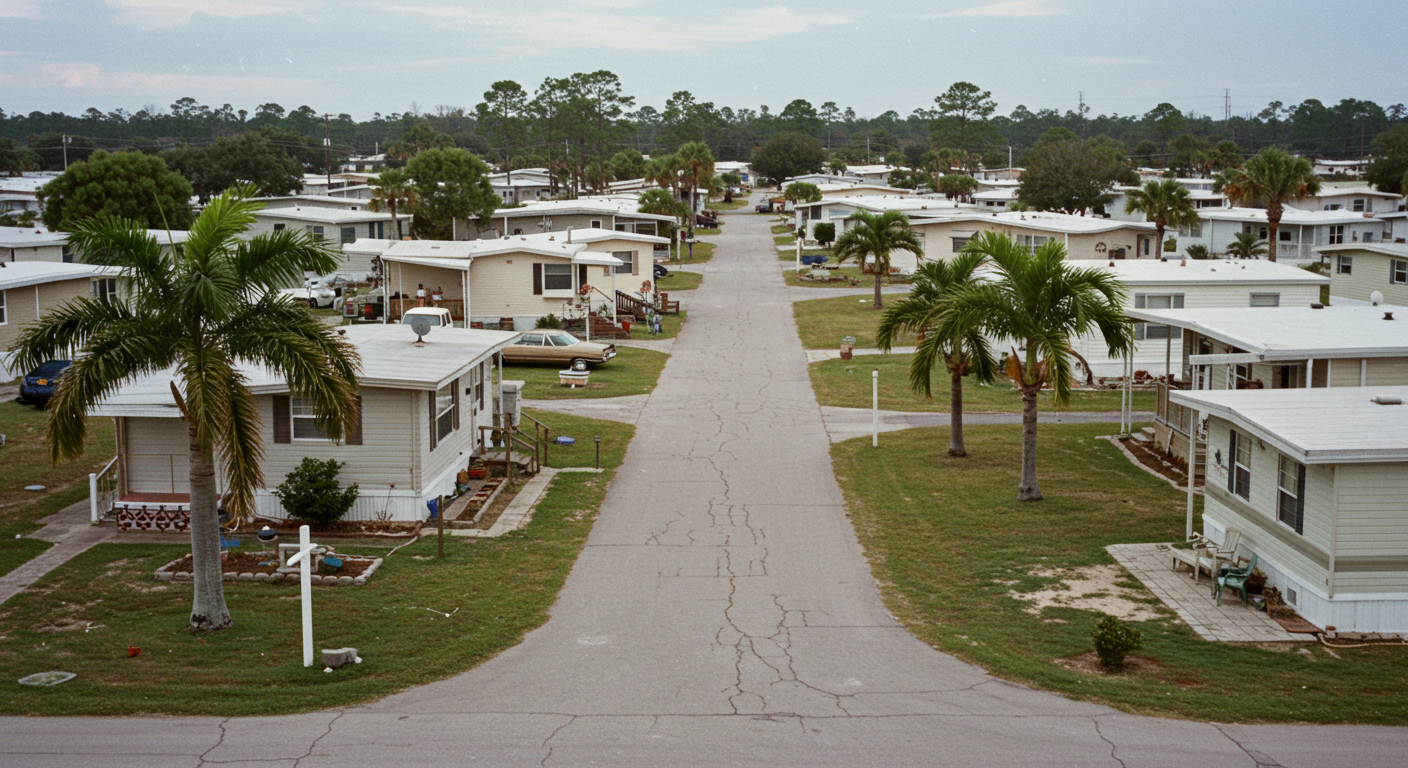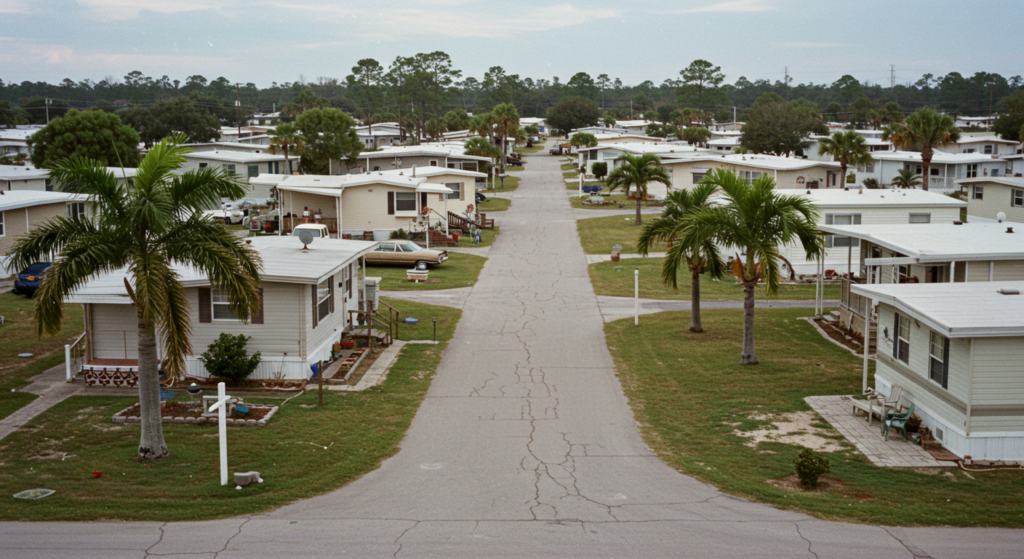
Narrative
In 2024, the owners of a mobile home park in Loxahatchee Groves, Florida, engaged in strategic tax planning to enhance their investment. The property consists of five one-story buildings encompassing a large mobile home park development. Originally constructed in 1972, the mobile home park has been well-maintained and includes various amenities.
The property features extensive site improvements including concrete paving, asphalt areas, landscaping, and recreational facilities such as a tennis court, basketball court, and volleyball court. A clubhouse/office serves as the central hub for the community, offering residents access to a gym with rubber flooring, a sauna, and various other amenities. The property also includes modern infrastructure with dedicated electrical services, water and sewer connections, and comprehensive storm drainage systems.
The owners engaged Engineered Tax Services (ETS) to perform a comprehensive cost segregation study of the property. This study aimed to identify and reclassify specific assets, enabling the acceleration of depreciation and optimizing tax benefits. This case study outlines the cost segregation strategy employed and its significant impact on the financial outlook of the property.
Objective
The primary objective of the cost segregation study was to identify and classify the mobile home park's assets to optimize the owners' tax savings. By breaking down and reallocating components into shorter depreciation life categories, ETS aimed to provide both immediate and long-term financial benefits through accelerated depreciation.
Methodology
ETS employed a detailed, engineering-based approach, which included:
- Physical Inspection: conducting a thorough site visit to identify and photograph the property's components
- Document Review: examining architectural plans, construction documents and accounting records
- Cost Analysis: applying engineering principles to allocate costs to specific asset classifications
- Depreciation Calculation: calculating depreciation using IRS-accepted methods such as the Modified Accelerated Cost Recovery System (MACRS)
Learn More About Cost Segregation
Explore the benefits of cost segregation and how it can enhance your property's profitability. Dive deeper into our strategies.
Discover MoreAsset Allocation
5-Year Class Life
Total Depreciation Allocation: $2,307,035.61 Percentage of Total Depreciable Basis: 8.16%
5-year class life assets identified in this study include:
- Dedicated incoming electrical service (400A)
- Dedicated equipment panels (100A and 225A)
- Security systems (cameras, stations)
- Gym equipment outlets
- Decorative lighting (wall sconces, track lights, chandeliers)
- Cabinetry (upper cabinets, base cabinets)
- Kitchen sinks and fixtures
- Office equipment connections
- Audio/video equipment
- Computer and telephone connections
- Decorative elements (mirrors, horizontal blinds)
- Sauna
15-Year Class Life
Total Depreciation Allocation: $20,699,951.82 Percentage of Total Depreciable Basis: 73.21%
15-year class life assets identified in this study include:
- Storm drainage systems (catch basins, concrete and metal lines)
- Recreational facilities (tennis court, basketball court, volleyball court, playground)
- Site improvements (concrete paving, brick pavers, landscaping)
- Site structures (CMU screen walls, wrought iron fencing, chain link fencing)
- Site lighting and electrical systems
- Mobile home pads and utility connections
- Retention pond
- Swimming pool
- Monument signage and site signage
- Outdoor amenities (barbeque station, flagpole)
27.5-Year Class Life
Total Depreciation Allocation: $5,267,993.57 Percentage of Total Depreciable Basis: 18.63%
27.5-year class life assets identified in this study include:
- Structural components (drywall partitions, ceilings, flooring)
- Building systems (HVAC, plumbing, general electrical)
- Water heaters
- Restroom fixtures and partitions
- Interior and exterior doors and windows
- Building slabs on grade and footings
- Roofing systems
- General use lighting and electrical panels
Class Life Details:
Summary
The cost segregation study for this mobile home park in Loxahatchee Groves, Florida, demonstrates the substantial financial advantages of strategic tax planning. The total purchase price of the property was $30,700,000, with a depreciable basis of $28,274,981.00. By reclassifying property components into shorter depreciation categories, the study enabled accelerated depreciation, resulting in significant first-year tax benefits.
Without cost segregation, the property would have generated only $728,294.97 in first-year depreciation. With cost segregation, first-year depreciation increased to $14,538,445.08. The total increase of depreciation was $13,810,150.11, representing a substantial improvement in cash flow and tax benefits for the property owners.
This approach not only enhanced the mobile home park's profitability but also allowed for more efficient capital management and future property upgrades. The case study illustrates how cost segregation can significantly boost the financial performance of real estate investments.
Unlock Your Tax Savings
Discover how cost segregation can maximize your tax benefits and improve cash flow. Get started today with a free consultation.
Get Your Free Consultation
